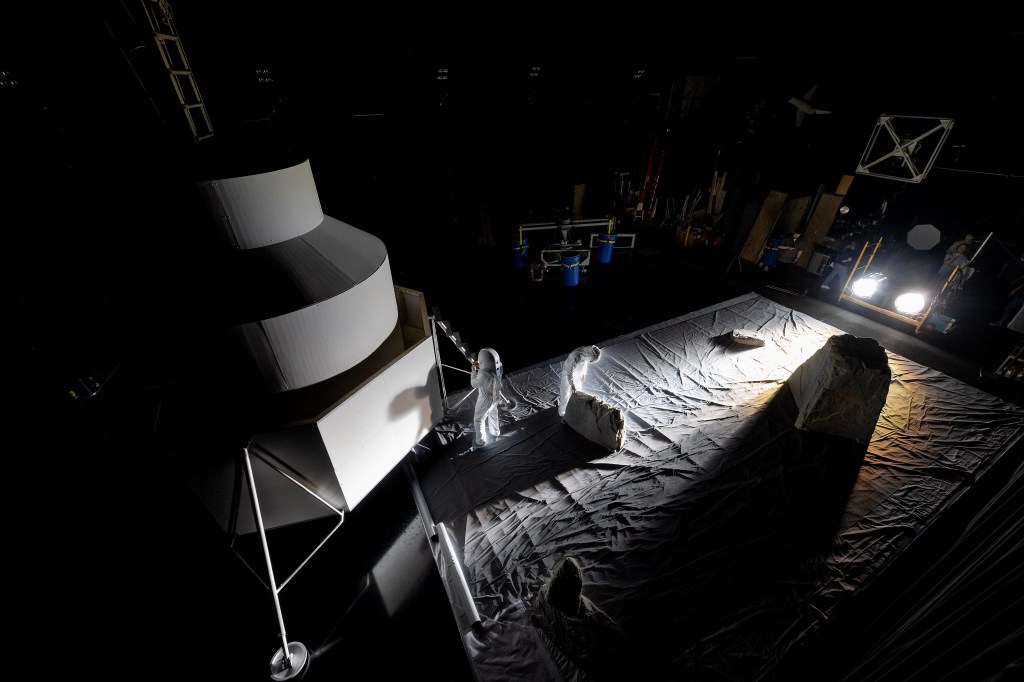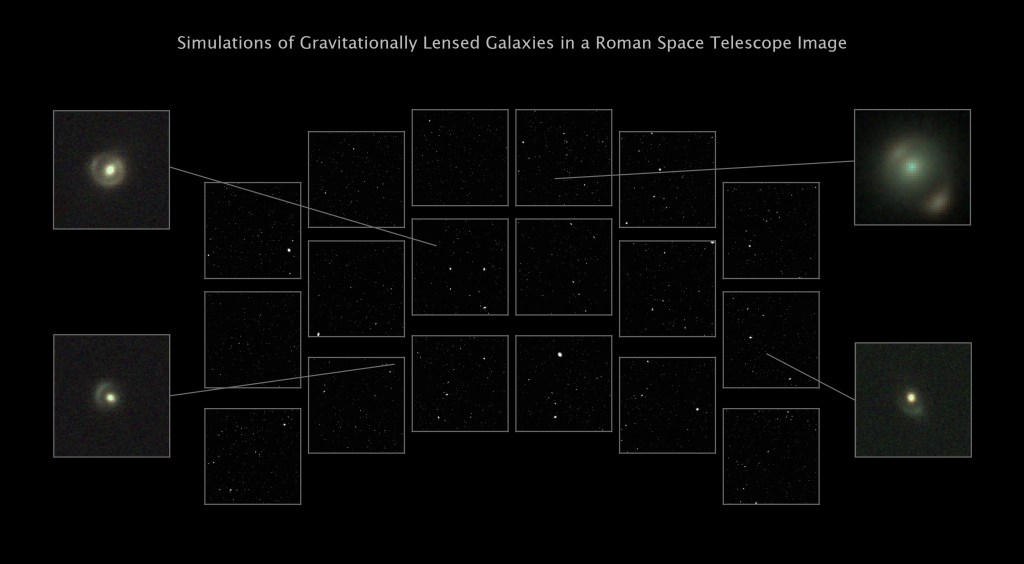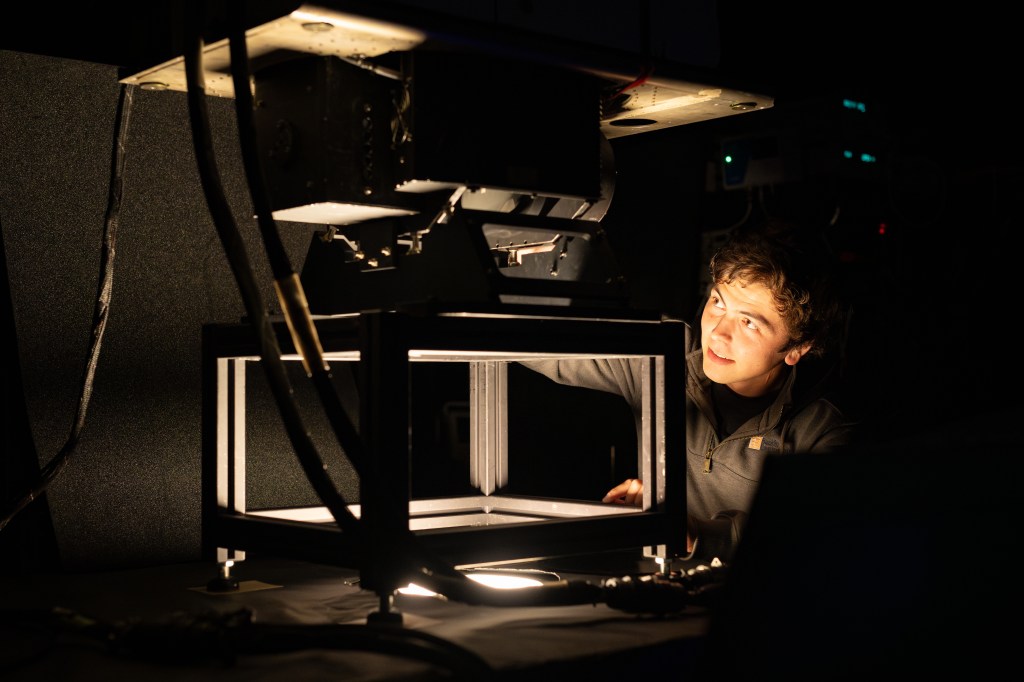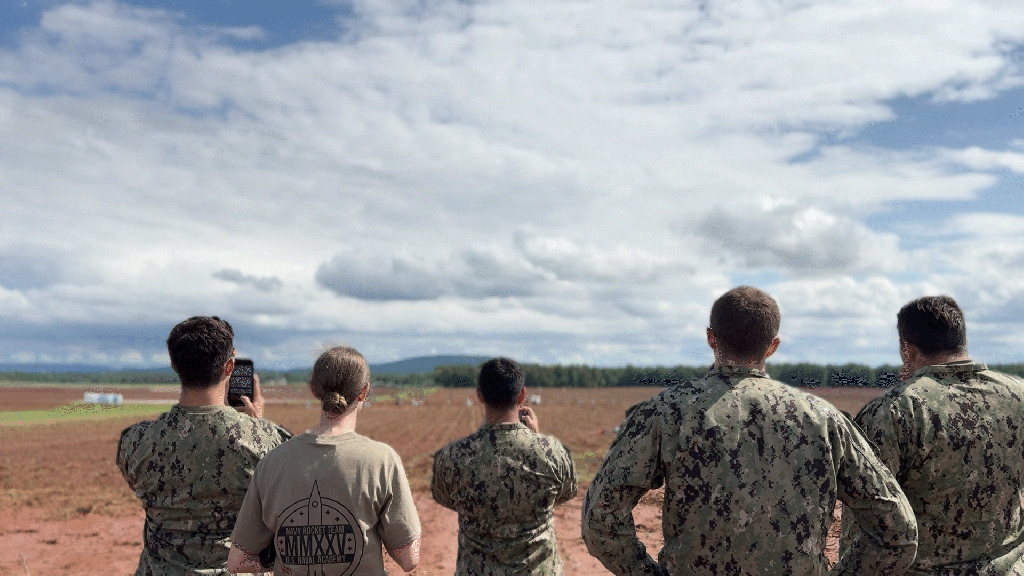Finishing preparations around the world for Cassini's final dedicated Radio Science experiment was one of this week's tasks. Late on Tuesday July 18, while Cassini was on approach for its 14th proximal plunge, the experiment began to measure tiny changes in the spacecraft's speed with enormous accuracy, feeling out the various concentrations of mass within Saturn and its ring system.

Finishing preparations around the world for Cassini's final dedicated Radio Science experiment was one of this week's tasks. Late on Tuesday July 18, while Cassini was on approach for its 14th proximal plunge, the experiment began to measure tiny changes in the spacecraft's speed with enormous accuracy, feeling out the various concentrations of mass within Saturn and its ring system. That experiment would continue for 32 hours, into the following day, and would later actively probe the rings by sending its three continuous radio beams back through them to be recorded on Earth.
Also this week, the flight team prepared, uplinked, and executed an Orbit Trim Maneuver (OTM). This one, OTM-472, might be Cassini's final one, although nothing will prevent firing the thrusters or main engine again another time if it turns out to be necessary later on.
Wednesday, July 12 (DOY 193)
While flying inbound over Saturn's northern hemisphere, Cassini continued gathering speed towards its 13th close-in plunge past the ringed giant. The Composite Infrared Spectrometer (CIRS) had the spacecraft turn to point its telescopes "down" to the ring system, where it stared at the sunlit side of the broad A ring for seven hours. For the first four hours, the other Optical Remote-Sensing (ORS) instruments took part; these are the Imaging Science Subsystem (ISS), the Visible and Infrared Mapping Spectrometer (VIMS), and the Ultraviolet Imaging Spectrograph (UVIS). They studied a region of the rings that is well populated by wake structures, and by photometrically distinct features dubbed "halos" that appear to be associated with some of the rings' more prominent waves.
CIRS then led UVIS for three hours in examining the area where Saturn's shadow falls across the B ring. The idea was to map, at mid-infrared wavelengths, the response of particles in the B ring as they cross from sunlight into Saturn's cold shadow. Particles in the optically dense B ring complete their orbits around the planet once every eight hours.
When this was done, UVIS spent almost two hours recording the occultation of the star Kappa Canis Majoris, as Cassini's motion made it pass behind the rings, going from the inner C ring, outward through the middle of the B ring. CIRS recorded data in ride-along mode, to map the rings in the thermal-infrared, rather than just observing the bluish star.
Continuing to concentrate on those rings for another two hours, ISS targeted some propellers (https://go.nasa.gov/2pzWU7G) that orbit Saturn within the A ring.
For the next three hours, VIMS watched the edge of Saturn's shadow, where the speeding ring material goes abruptly out of the sunlight; CIRS and UVIS rode along. After this, CIRS examined the "plateau" region of the C ring for three hours, with the rest of the ORS instruments also observing.
By midday, Cassini was within 100,000 kilometers of Saturn's cloud tops. Ever gathering speed, only nine hours later it plunged through the ring plane for the 13th time interior to the rings. Minutes later, it sped through periapsis coming within about 2,500 km above Saturn's visible atmosphere. Prior to periapsis, and for five hours after periapsis, ISS led the other ORS instruments in more ring observations at very high resolution. ISS captured images with spatial resolutions of about 700 meters per pixel in the C ring, and just over 1 km per pixel in the B ring.
Also during this passage, for roughly two hours centered around the ring plane crossing, the Ion and Neutral Mass Spectrometer (INMS) conducted an in-situ exploration of Saturn's exosphere and ionosphere. It measured neutral-atom densities and composition in a scientifically interesting region linking Saturn’s atmosphere with the rings. The Cosmic Dust Analyzer (CDA) spent the same period sampling the dust in the region.
Thursday, July 13 (DOY 194)
Today, the CDA oriented its sensors for four hours in the direction of incoming prograde dust particles originating from the rings. UVIS then spent 90 minutes trained on the bluish background star Gamma Orionis, as it became occulted by Saturn's upper atmosphere.
Friday, July 14 (DOY 195)
Today’s science activities alternated between UVIS observing multiple stellar occultations in Saturn's high atmosphere, and VIMS and CIRS mapping of Saturn. ISS interrupted these for 6.4 hours to lead the other ORS instruments in an observation of Saturn's small active moon Enceladus, watching its plume of ejecta.
Saturday, July 15 (DOY 196)
In two months from today Cassini will become a meteor in Saturn's atmosphere, ending a highly successful flight of nearly 20 years.
Cassini acted today upon commands that were uplinked and stored aboard on Thursday, and executed OTM-472. The spacecraft turned and fired its small hydrazine-fed rocket thrusters for 153 seconds. This provided the change in velocity of 143 millimeters per second that was needed to reduce timing errors during observations near periapsis in subsequent orbits.
UVIS and VIMS/CIRS continued their extremely thorough examination of Saturn's atmosphere for nearly five hours. First came one more Saturn stellar occultation, and then another Saturn mapping observation. Finally today, CIRS began a 12-hour map of the mostly dark planet at mid-infrared wavelengths.
Sunday, July 16 (DOY 197)
Having climbed outbound from Saturn for a little over three days now, coasting and slowing all the way, Cassini glided through apoapsis. This marked the beginning of its Orbit #284 of Saturn. ISS took the lead to observe the sunlit-crescent of Saturn’s northern limb, working with VIMS and UVIS for 4.6 hours to study the composition of the high atmosphere.
Monday, July 17 (DOY 198)
ISS spent another 2.4 hours measuring the Saturn atmosphere's composition with UVIS and VIMS. UVIS then watched an occultation of the star Beta Canis Majoris high in Saturn’s atmosphere. Just as on Friday, this occultation was one of many used for determining temperatures and mapping chemical species in the thermosphere. Finally, CIRS led the other ORSs for 11.5 hours, studying the composition of Saturn’s atmosphere as it rotated through a little more than one whole Saturn day.
One week ago today, two Cassini scientists used the 10-meter diameter Keck Telescope, situated on the summit of Mauna Kea in Hawaii, to observe the northern latitudes of Saturn's planet-like moon Titan. Using the Keck telescope's Near Infrared Spectrometer, which is a vacuum instrument cooled to 60 K (substantially colder than the surface of Titan itself), their observations were simultaneous with Cassini's VIMS observations of Titan on that day. Together, their data will help quantify the methane humidity in Titan's atmosphere. Soon, there will be no spacecraft working in the Saturn realm, and scientists will depend on Earth-based instruments to fill in as best they can.
An article featured today is about summer interns who work on the Cassini Program, and their special visit to Mission Control: /resources/17709.
Another article published today features the European Space Agency's realtime participation in Cassini's Grand Finale phase: /news/13081/ground-stations-go-dancing-with-cassini.
The Cassini image featured today catches Saturn's tiny but active moon Enceladus backlit by the Sun: /resources/17707.
Tuesday, July 18 (DOY 199)
It's almost time for another periapsis already. Diving inward and approaching Saturn from the north again, UVIS and VIMS collaborated for four hours, with CIRS and ISS riding along, to observe Saturn's illuminated northern auroral oval. Cassini's viewing geometry on this approach is illustrated here.
After Cassini's telescopic observations were done, Cassini turned its high-gain antenna toward the home planet, where multiple Deep Space Network (DSN) and European Space Agency (ESA) stations were lined up on the rotating Earth, ready in turn to lock solidly on Cassini’s signal. Beginning 12 hours before periapsis passage, the Radio Science Subsystem started one of its best observations, and unfortunately the final one dedicated Radio Science observation in Cassini's mission lifetime.
The DSN's sensitivity (as well as ESA's) in measuring Cassini's line-of-sight speed is quite remarkable. Even though Earth and Saturn are revolving around our central star at huge velocities, JPL's navigation capabilities tease out very small spacecraft velocity signatures. The Radio Science team uses them to deduce the distribution of mass within Saturn and its rings, by measuring accelerations that are 10 million times smaller than Earth's gravity; spacecraft speed changes are routinely measured that amount to hundredths of a millimeter per second. Belaboring this point, if one were to "clap" one's hands together at that speed from one meter apart, it would take over 27 hours to complete the clap; tiny velocities indeed. The feat is routinely accomplished by having the ground station send Cassini a highly stable reference radio frequency, one that is based on a massive, carefully maintained hydrogen-maser frequency standard on Earth. Cassini's downlink frequencies, then, become stable enough to observe these very small Doppler shifts as the spacecraft passes over various parts of Saturn.
This science addresses key questions about what is inside Saturn, how the planet is layered, what its temperature profile is, and how deep the winds are. Cassini must come very close to Saturn to feel the acceleration caused by the weakest of these gravity perturbations, and this is why the Grand Finale orbits are so valuable and unique to understanding the planet's interior.
While passing close to the planet, Cassini also feels the gravitational pull from the rings, whose mass can therefore be determined. The rings' mass bears special relevance because it offers clues as to the age of the ring system.
The DSN communicated with and tracked Cassini on 11 occasions this week, using stations in California, Spain, and Australia. The European Space Agency also contributed ground antenna support on one occasion from Argentina. A total of 132 individual commands were uplinked, and about 1,370 megabytes of science and engineering telemetry data were downlinked and captured at rates as high as 142,201 bits per second.
Wrap up:
Cassini is executing its set of 22 Grand Finale Proximal orbits, which have a period of 6.5 days, in a plane inclined 61.9 degrees from the planet's equatorial plane. Each orbit stretches out to an apoapsis altitude of about 1,272,000 km from Saturn, where the spacecraft's planet-relative speed is around 6,000 km/hr. At periapsis, the distance shrinks to about 2,500 km above Saturn's visible atmosphere (for reference, Saturn is about 120,660 km in diameter), and the speed is around 123,000 km/hr.
The most recent spacecraft tracking and telemetry data were obtained on July 19 using the 70-meter diameter DSN station in Spain. The spacecraft continues to be in an excellent state of health with all of its subsystems operating normally except for the instrument issues described at https://saturn.jpl.nasa.gov/anomalies.
The countdown clock in Mission Control shows 58 days until the end of the Mission.
------------------------
This page offers all the details of the Mission's ending: <https://saturn.jpl.nasa.gov/mission/grand-finale/overview/>
------------------------
Milestones spanning the whole orbital tour are listed here:
<https://saturn.jpl.nasa.gov/mission/saturn-tour/tour-dates/>
------------------------
Information on the present position and speed of the Cassini spacecraft may be found on the "Present Position" page at:
<https://saturn.jpl.nasa.gov/mission/saturn-tour/where-is-cassini-now/>
------------------------
To unsubscribe from Cassini Spacecraft Updates or to subscribe with a different email address, visit:
<http://saturn.jpl.nasa.gov/news/mailinglistsignup/>
------------------------
For comments and questions, please contact Cassini Public Engagement at:
<http://saturn.jpl.nasa.gov/feedback/>
------------------------











.jpg?w=1024)

















.jpg?w=5438&h=3638&fit=clip&crop=faces%2Cfocalpoint)





